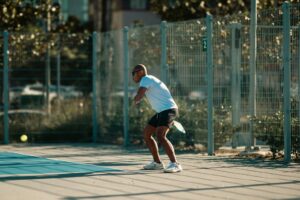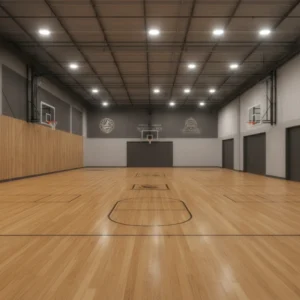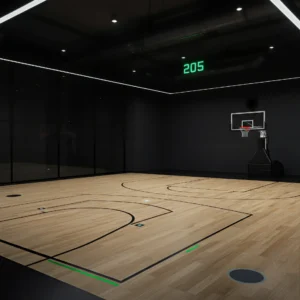Pickleball has surged in popularity, becoming one of the fastest-growing sports in the U.S. It’s no longer just a pastime for retirees—it has captured the hearts of players of all ages and skill levels. Along with this growth comes an important decision for every enthusiast and facility manager alike: Should you play on indoor or outdoor pickleball courts?
Both types of courts provide unique experiences, but they also come with their own advantages, challenges, and considerations. This comprehensive guide will help you dive into the details and ultimately decide which type of court is best suited for your game.
A Quick History of Pickleball and Its Phenomenal Rise
Invented in 1965 on Bainbridge Island, Washington, pickleball was originally a backyard invention aimed at entertaining families. Fast forward to today, and it’s transformed into an international phenomenon.
The sport’s blend of tennis, badminton, and ping-pong makes it both social and competitive. With over 36.5 million players as of 2023, pickleball has gained notable traction not only for leisure players but also among professional athletes. Correspondingly, the demand for high-quality pickleball courts—both indoor and outdoor—has skyrocketed.
The Rise of Pickleball Courts
The rapid growth of pickleball participation has led to an increased demand for dedicated pickleball spaces, including both indoor and outdoor courts. Traditional tennis courts are often modified with pickleball floor markings to accommodate players, while purpose-built pickleball floors are becoming more common in gyms, community centers, and outdoor recreational facilities.
Modern Trends in Pickleball Court Design
Whether it’s investing in cutting-edge pickleball flooring or designing community-friendly spaces, the rise of court installations indicates that this trend is here to stay. With consistent improvements in pickleball court surfaces and materials, players can now enjoy better traction, reduced joint stress, and longer-lasting durability—whether they’re indoors or outdoors.

Comparing Indoor and Outdoor Pickleball Courts
When deciding between indoor pickleball and outdoor pickleball setups, there are several factors to consider. Here’s a breakdown of both options:
Indoor Pickleball Courts
Advantages:
- Consistent Playing Conditions: Indoor settings eliminate concerns over weather, such as rain or wind, providing a controlled environment year-round.
- Advanced Pickleball Flooring: Indoor pickleball courts often boast premium materials like polished wood, cushioned vinyl, or modular court tiles designed for shock absorption and traction.
- Reduced Maintenance: Indoor courts typically require less upkeep as they’re not exposed to outdoor elements like UV rays, dirt, or water.
Disadvantages:
- Space Limited: The availability of indoor pickleball courts might be restricted in certain areas, as retrofitting gyms or creating new indoor courts can be costly.
- Higher Setup Costs: Constructing and maintaining indoor spaces necessitates additional investment in lighting, HVAC systems, and specialized pickleball floor material.
Outdoor Pickleball Courts
Advantages:
- Unlimited Space: Outdoor courts offer more flexibility in utilizing open spaces for multiple courts.
- Natural Appeal: Players often enjoy being outdoors in fresh air and under the sun, making outdoor pickleball a desirable option for recreational matches.
- Affordable Installation: Outdoor pickleball court surfaces generally cost less to install than indoor counterparts. Concrete and asphalt are popular materials, and applying specialized outdoor pickleball flooring coatings can enhance playability.
Disadvantages:
- Weather-Dependent: Rain, wind, and extreme heat or cold can disrupt play, affecting the game’s experience and scheduling.
- Higher Maintenance Costs: Outdoor courts face wear and tear from UV exposure, moisture, and temperature fluctuations, requiring regular resurfacing and care.
Factors to Consider When Choosing a Pickleball Court
1. Weather Conditions
If the local climate frequently brings rain or extreme weather, indoor pickleball courts may offer more consistent access. On the other hand, outdoor courts are ideal for areas with mild, sunny weather.
2. Convenience
Proximity matters. If there’s a nearby indoor pickleball court, it might save time and enhance accessibility for regular practice. Conversely, outdoor courts, often attached to parks or recreational spaces, might be more plentiful and easier to find.
3. Pickleball Court Flooring
- Indoor Court Surfaces: Many indoor courts feature polished hardwood or cushioned vinyl, which provide excellent shock absorption and ball bounce consistency.
- Outdoor Court Surfaces: Outdoor courts often feature rougher textures, using concrete or acrylic coatings designed for durability and weather resistance.
4. Costs
Indoor courts require higher initial and operational costs due to the need for climate control, complex lighting setups, and premium pickleball court flooring materials. Outdoor courts typically offer a more budget-friendly option but may incur recurring maintenance expenses.
5. Maintenance
Managing water damage, dirt, or cracks may increase the workload for outdoor surfaces. However, some outdoor pickleball mats are crafted to withstand such challenges, minimizing long-term upkeep.

The Future of Pickleball
The future of pickleball courts is exciting as technology continues to innovate the sports landscape. From pickleball mats designed with sustainable materials to AI-powered coaching programs, the next generation of courts emphasizes accessibility and innovation.
- Modular Court Technology: Modular pickleball court floors feature interlocking systems for quick setups and takedowns, making them suitable for both indoor and outdoor applications.
- Sustainability Initiatives: Manufacturers are increasingly developing eco-friendly pickleball mat options, prioritizing sustainability in sports facility setups.
- Smart Courts: The integration of sensors that track game stats and player performance on pickleball court surfaces is gaining traction.
Tips for Improving Your Game on Different Courts
Whether you’re gearing up for an indoor tournament or a casual outdoor match, here are some tips to adapt your play:
- Indoor Tips:
- Wear non-marking shoes with ample grip for polished wood or vinyl surfaces.
- Practice how your paddle reacts to balls on smooth, consistent surfaces where speed and precision are key.
- Outdoor Tips:
- Adjust to wind by practicing slower, controlled shots to counter external elements.
- Use durable, weather-resistant paddles and balls designed specifically for outdoor gameplay.
- General Advice:
- Develop a versatile playing style that allows for seamless adaptation to different pickleball court surfaces.
- Regularly inspect your gear to ensure it’s suited for the conditions.

Which Court Is Best for You?
Ultimately, the best choice depends on your preferences, playing style, and circumstances:
- Indoor Pickleball Courts are ideal for those who prioritize consistency, comfort, and year-round gameplay.
- Outdoor Pickleball Courts are perfect for players who enjoy the natural elements and cost-effective installations.
Still can’t decide? Try playing on both! The versatility will elevate your skillset and make you a more dynamic player.









